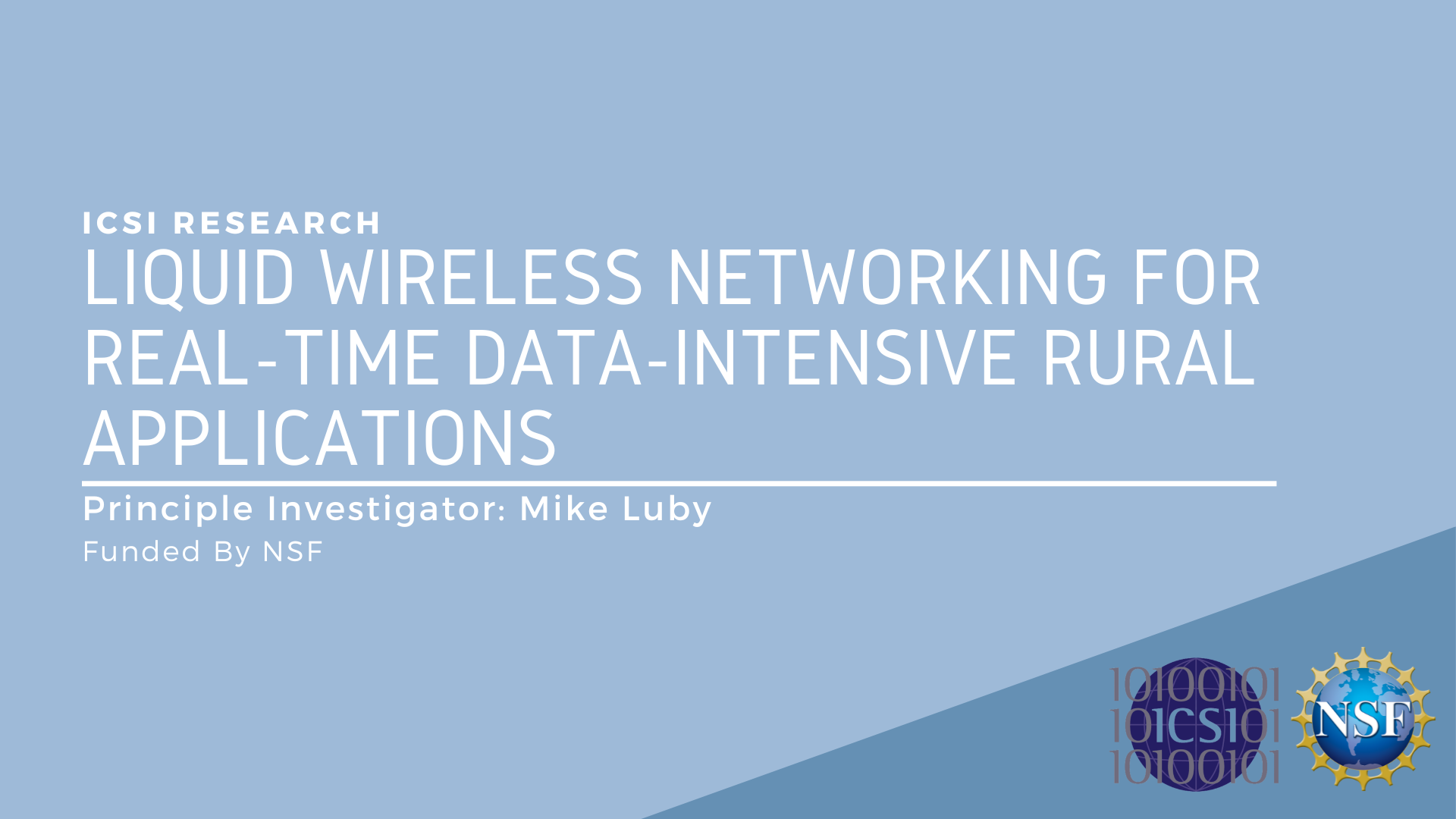Current users login here
- AI
- BFOIT
- California Connects
- Color, Language, and Thought
- Extracting Event Attributes from Unstructured Textual Data for Persistent Situational Awareness
- FrameNet
- MetaNet: A Multilingual Metaphor Repository
- NTL
- Identifying semantic components from cross-language variation, structured lexical resources, and corpora
- Multilingual FrameNet: Merging FrameNets for Cross-linguistic Research
- Preserving Unwritten Languages
- Audio and Multimedia
- GeoTube
- Knowledge-Aided Interface for Big Data Streams
- Multimodal Feature Learning for Understanding Consumer Produced Multimedia Data
- Multimodal Location Estimation
- Privacy Literacy with San Jose Public Library
- Shining Light on Non-Public Data Flows
- SMASH
- Teaching Resources for Online Privacy Education (TROPE)
- Video Concept Detection
- Multi Modal Video Summarization
- Big Data
- The Berkeley Data Analysis System
- Characterizing and Exploiting Tree-Like Structure in Large Social and Information Networks
- Combining stochastics and numerics for more meaningful matrix computations
- Leverage Subsampling for Regression and Dimension Reduction
- Machine Learning Methods and Large Informatics Graphs
- Randomized Numerical Linear Algebra (RandNLA) for Multi-Linear and Non-Linear Data
- Robust, Efficient, and Local Machine Learning Primitives
- Scalable Statistics and Machine Learning for Data-Centric Science
- Streaming Algorithms for Fundamental Computations in Numerical Linear Algebra
- Theory and Practice of Randomized Algorithms for Ultra-Large-Scale Signal Processing
- Core Technology for TCS
- Extensible Internet
- Networking and Security
- Accountable Information Use: Privacy and Fairness in Decision-Making Systems
- Bro Center of Expertise for the NSF Community
- Bro Intrusion Detection System Refinements
- Censorship Counterstrike via Measurement, Filtering, Evasion, and Protocol Enhancement
- CESR: The Center for Evidence-based Security Research
- Characterizing Enterprise Networks
- Co-Design of Network, Storage and Computation Fabrics for Disaggregated Datacenters
- Creating an Evolvable, Diverse, and Dynamic Internet
- De-Mystifying and Hardening the Domain Name System
- The Design and Implementation of a Consolidated MiddleBox Architecture
- Detecting and Preventing Network Attacks
- Developing Security Science from Measurement
- Effective and Economical Protection for High-Performance Research and Education Networks
- Enhancing Bro for Operational Network Security Monitoring in Scientific Environments
- Evaluating Price Mechanisms for Clouds
- Exploring Internet Balkanization through the Lens of Regional Discrimination
- Future Internet Architecture
- Internet-Wide Vulnerability Measurement, Assessment, and Notification
- Investigating the Underground Economy
- Lumen Privacy Monitor
- Network Virtualization for OpenCloud
- Open Software-Defined Networks
- Semantic Security Monitoring for Industrial Control Systems
- Shining Light on Non-Public Data Flows
- A Software-Defined Internet Exchange
- Towards Programming Datacenters
- Towards a Science of Censorship Resistance
- Understanding and Exploiting Parallelism in Deep Packet Inspection on Concurrent Architectures
- Understanding the State of TLS Using Large-scale Passive Measurements
- Understanding and Taming the Privacy Footprint
- Universal Packet Scheduling
- User-Centric Networking
- When do Computers Discriminate? Toward Informing Users About Algorithmic Discrimination
- PacketLab: A Universal Measurement Endpoint Interface
- Privacy Risk in Machine Learning Pipelines
- Rethinking Home Networking for the Ultrabroadband Era
- Research Initiatives
- Analysis of Genome-Wide Association Studies for Common Diseases
- Cybermanufacturing: Abstractions and Architectures for Open Composable Services
- Deep Learning-Based Self-Organizing Network for B5G Communications with Massive IoT Devices
- Evaluating Price Mechanisms for Clouds
- Finding Conserved Protein Modules
- Interoperability Challenges and Scenarios in Computational Design and Manufacturing
- Limiting Manipulation in Data Centers and the Cloud
- Tactile Internet Islands
- Towards Automated Testing and Discovery of Interoperability
- Undermining Political “Scratch” Effects with Technology (UPSET)
- Variable Precision Computing LDRD Project
- Speech
- Automatic Recognition of Camera Speech (ARCS)
- COSMOS
- How does deep learning improve speech recognition accuracy?
- Project Ouch - Outing Unfortunate Characteristics of HMMs (Used for Speech Recognition)
- Robust Automatic Transcription of Speech
- Speaker Recognition
- SWORDFISH
- Towards Modeling Human Speech Confusions in Noise
- Deep and Wide Learning for Automatic Speech Recognition
- Word Bug
- Usable Security and Privacy
- AppCensus: Learn the Privacy Costs of Free Apps
- Increasing Users' Cyber-Security Compliance by Reducing Present Bias
- Mobile Contextual Privacy
- Mobile Dynamic Privacy and Security Analysis at Scale
- Privacy Literacy wtih San Jose Public Library
- Scaling Contextual Privacy to MDM Environments
- Science of Security
- Security and Privacy for Wearable and Continuous Sensing Platforms
- Teaching Resources for Online Privacy Education
- The Science of Privacy: Implications for Data Usage
- Usable Security of Emerging Healthcare Technologies for Seniors
- Using Individual Differences to Personalize Security Mitigations
- Exploring the Boundaries of Passive Listening in Voice Assistants
- Vision
- 3D Point Cloud Parsing
- Adversarial Robustness
- Complex-valued Deep Learning
- Implicit Deep Learning
- Machine Learning for Medical Applications
- Machine Learning in the Hyperbolic Space
- Model Learning and Compression
- Representation Learning
- Robotic Manipulation and Locomotion
- Sketch Recognition and Photo Synthesis
- Sound and Vision Integration
- Vision-Based Reinforcement Learning
- 2i2c
- Robust Deep Learning
Quick Links
Visitor Information
Copyright © 2012-2022 International Computer Science Institute (ICSI). All Rights Reserved.

 Rural broadband is a foundation for rural economy and quality of life, and many rural applications require real-time data-intensive communications. To address the rural broadband challenge, wireless networks are essential building blocks. However, rural wireless is subject to environmental factors such as weather, terrain, foliage, and crop types and densities, and there exist complex network dynamics and uncertainties (e.g., spatiotemporal uncertainties of wireless links).
Rural broadband is a foundation for rural economy and quality of life, and many rural applications require real-time data-intensive communications. To address the rural broadband challenge, wireless networks are essential building blocks. However, rural wireless is subject to environmental factors such as weather, terrain, foliage, and crop types and densities, and there exist complex network dynamics and uncertainties (e.g., spatiotemporal uncertainties of wireless links).